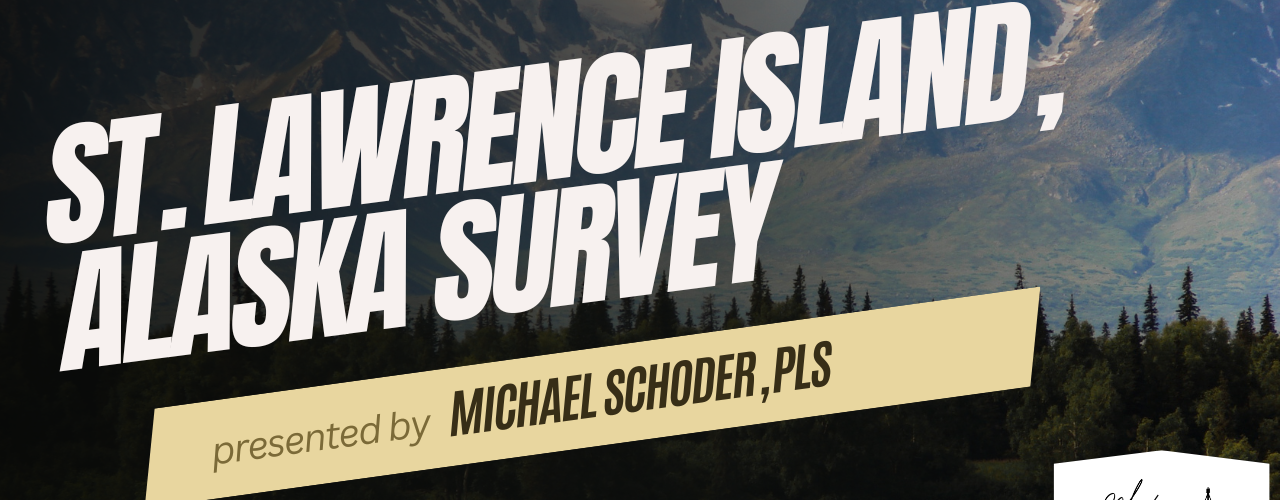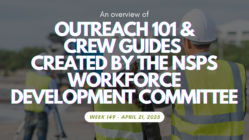Michael H. Schoder, PLS, presents on St. Lawrence Island, Alaska Survey.
| Meeting summary for Mentoring Mondays for the Land Surveying Profession (09/23/2024) | |
| Quick recap | |
| The meeting covered technical issues with screen sharing and audio, followed by Michael’s presentation on a complex land surveying project for St. Lawrence Island, Alaska, involving collaboration with various agencies and innovative approaches. Michae discussed the challenges of surveying according to Federal standards, the importance of team ownership, and the use of advanced technology in aerial imagery and data processing. The conversation ended with discussions on updating MTP maps and the significance of precise data in computations for land surveys. | |
| Next steps | |
| • Blair Parker to provide additional details on innovations in place and scope for the St. Lawrence Island survey project. | |
| • Michael Skoder to send a copy of the US Survey PDF to Grant. | |
| • BLM team to continue maintaining and updating the SDMS (Spatial Data Management System) for St. Lawrence Island survey data. | |
| • BLM team to ensure ongoing accessibility of the SDMS tool for villagers to view their land boundaries. | |
| • BLM team to archive and maintain long-term access to the survey data, including GPS observations and computations. | |
| • BLM team to consider using the NAVCO archive for retrieving historical CORS station data in future projects. | |
| • BLM team to continue refining and applying innovative survey techniques for large-scale projects in challenging environments. | |
| Summary | |
| Project Challenges and Successes on St. Lawrence Island | |
| Michael discussed the challenges and successes of a project involving St. Lawrence Island, Alaska, which was a requirement for the Alaska Native Land Claim Settlement Act. He highlighted the importance of assembling a team from the beginning and letting them take ownership of the project. He also mentioned the unique land tenure and the innovative approaches taken in the project. Michae shared some of the challenges faced, such as the extreme cost of living and limited access to the island. He also mentioned the cultural significance of the island, including the walrus and whalebone carvings. The conversation ended with Michael returning to his slideshow. | |
| Federal Survey Standards and Alaska Native Claims | |
| Michael discussed the complexities of surveying land according to Federal Survey standards, particularly in relation to the Alaska Native Claims Settlement Act. He explained the concept of an interim conveyance, which allows for land to be conveyed prior to survey, subject to all existing rights. Michae also mentioned the importance of meeting the requirements of the Angska Act, which provides for the survey of all Alaska Village Corporation lands and the withdrawal of sections for conveyance to the public Land Survey system. He highlighted the challenges of communicating with the tribal councils and the importance of understanding land ownership and conveyances. Michae also discussed the possibility of using GPS to navigate the land and the potential for future surveys. He concluded by mentioning the resolution signed by the villages, accepting the land not described in reference to the public land survey system. | |
| Aerial Imagery Project With DTGS Collaboration | |
| Michael discussed a project involving aerial imagery and collaboration with the Alaska Department of Geological and Geophysical Survey (DTGS). They found that DTGS had access to high-end photogrammetric software at the University of Alaska’s Fairbanks supercomputer, which significantly saved time and money. The project involved survey work, logistics for helicopter transportation, and fuel supply. Michae highlighted the challenges and solutions of postmarking and data handling in a large project, including the use of photogrammetry for interpreting meander lines and the team’s efforts to survey and plat a single US survey. He also discussed the importance of envisioning the final records from the beginning of a project and the potential for a new photo campaign. Michael emphasized the challenges and solutions of managing logistics for a large-scale project, including the use of existing solutions and the need for additional data sets. He praised the team’s innovative approach to postmarking and the use of scripts for area computations. The project involved a significant amount of field time and required careful attention to detail. | |
| Survey, Patent, and Island Map Discussion | |
| Michael discussed the final survey and patent, which included 66 sheets for platting and 568 pages of field notes. He shared the survey number with Grant and mentioned that a copy could be obtained from the BLM’s website. Michae also presented a new screen showing the island’s map, highlighting the 1 inch equals 500 chains scale. He discussed the Gamble and Savonga areas, the military’s additional withdrawal for an early warning and radar site during the Cold War, and the reindeer reservation introduced by President Roosevelt in 1903. Michael detailed the complexities of a survey project involving a large area of water with numerous islands, rocks, and lakes, and the process of finding and repositioning control points. He also mentioned the challenges faced by the BLM Cadastral due to the lack of an acreage requirement and the need to get down to the last acre. | |
| Project Completion and Signing Ceremony Discussion | |
| Michael discussed the successful completion of a project involving the creation of an index, which was highly appreciated by the recording office. He praised the team’s efforts and the ownership they took in the project. He also mentioned a signing fair ceremony held in April or late May, where the director of BLM wanted to sign the patent. Michael also shared his experience of buying ivory for the native people who were starving. blair then chimed in, expressing his appreciation for the project and acknowledging the unique challenges it presented. He also mentioned that the project was completed within a reasonable time frame and at a reasonable cost for the government. | |
| Updating MTP Maps and Collaboration Discussion | |
| Michael discussed the process of updating MTP maps after a survey was filed and the collaboration with the master tile group. He also shared a photo of a housing development and a runway, and explained how the imagery used could represent the land’s condition in real time. Michael also discussed the importance of precise data in computations, using the example of a temporary point they solved for using long baselines. He mentioned that the data from a core station was not available, but they were able to solve for the point within 2 millimeters using precise orbits and ephemeris. | |
| AI-generated content may be inaccurate or misleading. Always check for accuracy. | |







